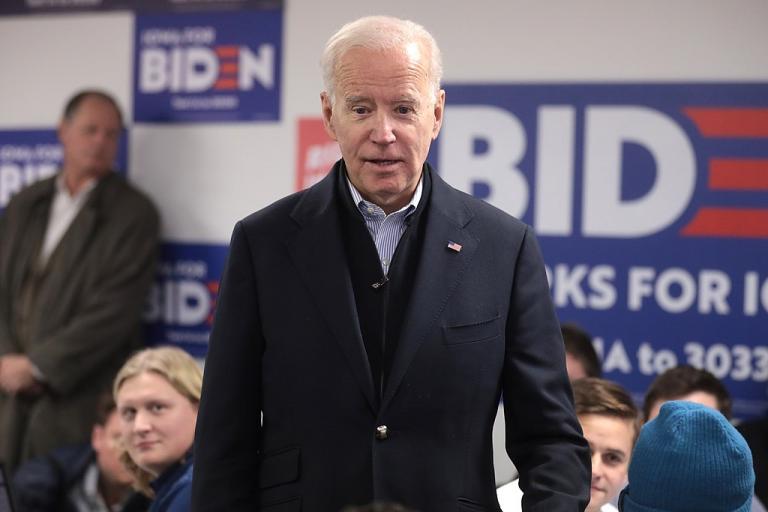
A presidential candidate usually takes his political party where he wants it to go, dictating the party platform and making all of its big decisions. Joe Biden, though, is having to placate and cobble together the different factions in his own party to win their support. Presumably, if he is elected president, he would govern in the same way. This kind of chief executive is more like the Prime Ministers of Europe, as opposed to the usual role of Presidents of the United States.
So says Joseph C. Sternberg in a provocative column in the Wall Street Journal entitled Are Voters Ready for Prime Minister Biden? (subscription required). Here are some excerpts:
You probably think he’s running for president. He probably does, too. But Mr. Biden is running for a job more akin to a European prime minister. His purpose has become to serve as an avatar for a confused and tenuous Democratic alliance.
Prime ministers such as Angela Merkel or Boris Johnson serve a different function. In constitutional systems that lack a strong executive, a prime minister represents a temporary and often brittle agreement within a ruling party. Even when, as in Mr. Johnson’s case, they seem revolutionary, the leader still has to step lightly around various unvanquished internal foes.
Which of these two models do you think Mr. Biden is following?
Sternberg points to the way Biden picked his Vice Presidential running-mate Kamala Harris: not to win an undecided state or attract a particular constituency of voters, as is the traditional criteria, but to shore up the different interest groups in his own party, lest they fail to show up to vote for him.
Another example is Bernie Sanders, who stayed in the race and kept accumulating delegates even after Biden defeated him soundly. Why did he do that? In Sanders’ words, “to exert significant influence over the party platform.” So now the primary loser has become the co-author of Biden’s economic plan. As Sternberg explains, “Factions within European parties don’t so much fall into line behind a candidate as develop enough electoral heft to drag that candidate into line behind them.”
The biggest indicator, however, is that at this late date no one knows what Mr. Biden truly stands for—and, more important, no one cares. It’s now widely accepted that his administration will be the plaything of jostling Democratic special interests. A president usually suppresses such conflicts through strength of personality and electoral mandate. A prime minister merely manages them, as Mr. Biden will attempt.
A Biden premiership would function like a European cabinet: every man, woman and child for him-, her- or zirself. Cabinet ministers of the same party sometimes work together, other times at cross-purposes, and never seem entirely clear on who’s running the show. Under Prime Minister Biden, the buck will never stop anywhere.
This is the point. Democrats didn’t pick Mr. Biden because he’s moderate, they picked him because he’s weak.
If Democrats are going to follow the Prime Minister model, Sternberg urges voters to pay special attention to the party platform. Usually, that document means little. But if the party, not just the party candidate, is going to rule, the platform becomes a manifesto that the different factions are likely to follow.
Those who believe the presidency has already become too powerful might appreciate more of a Prime Minister model. It is surely significant that virtually all other democratic societies have chosen a parliamentary system–in which the chief executive, the Prime Minister, is the head of the majority party. In a parliamentary system, “things get done,” since the legislators and the Prime Minister work together, and yet it encourages compromise and coalitions, ensuring that the many parties representing many points of view have a voice.
And yet, to have not just a limited chief executive but a limited government, it helps to have our Constitutional system in which rival branches of government check and balance each other.
Photo: Joe Biden by Gage Skidmore from Surprise, AZ, United States of America / CC BY-SA (https://creativecommons.org/licenses/by-sa/2.0) via Wikimedia Commons













